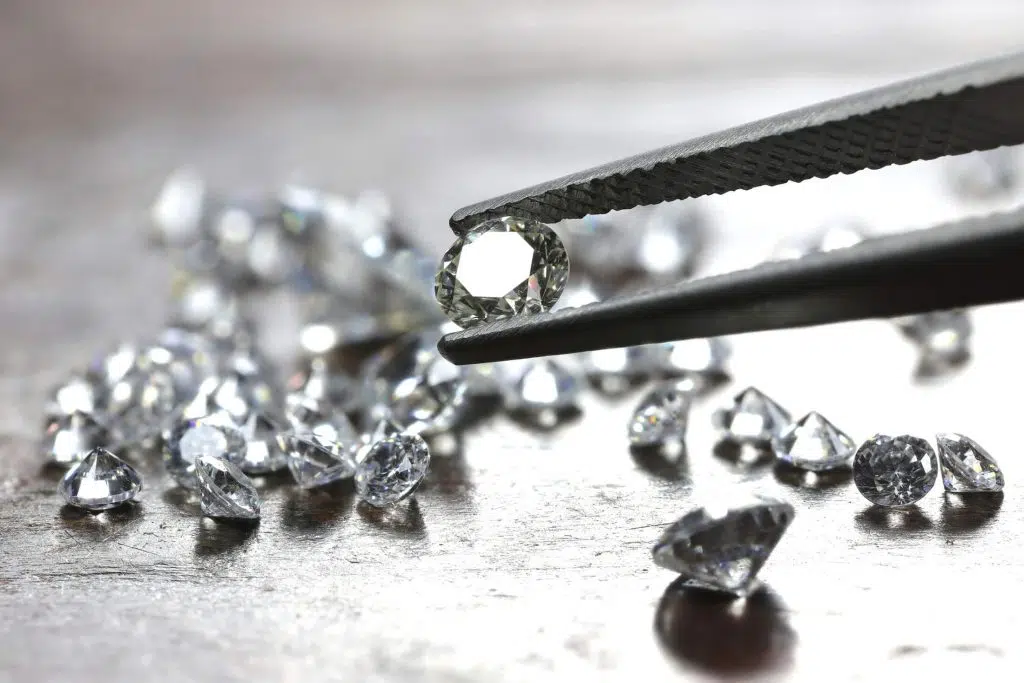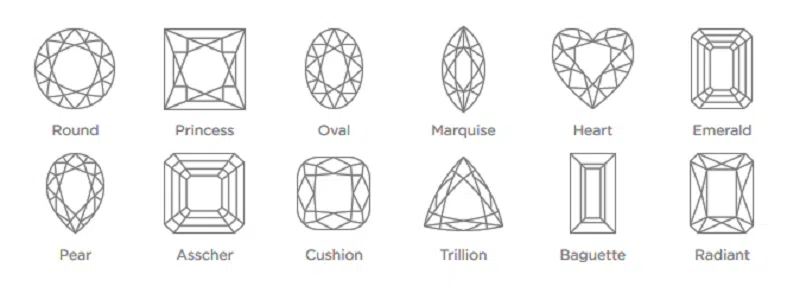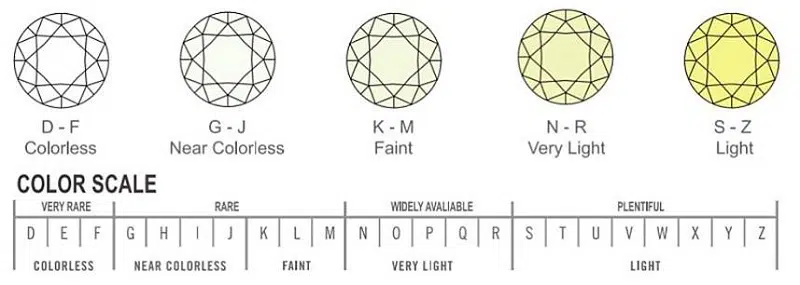
How to choose a diamond
Choosing a diamond is a highly personal journey, one that should reflect your individual style and preferences. While the 4 Cs—cut, colour, clarity, and carat weight—are key factors influencing a diamond’s price and value, the most critical aspect is selecting a stone that speaks to you or brings happiness to someone special.
Understanding the 4 Cs
Cut: The cut of a diamond is vital as it determines how well the stone captures and reflects light. A well-executed cut enhances a diamond’s sparkle and overall beauty.
Colour: Diamonds can be found in various hues, from completely colourless to shades of yellow and brown. Typically, diamonds with less colour are more sought after and hold a higher value.
Clarity: Clarity refers to the presence of internal flaws or external blemishes in a diamond. Diamonds with fewer imperfections are rarer and therefore more valuable.
Carat Weight: This indicates the size of the diamond. Generally, larger diamonds carry a higher price tag, but their overall value is also influenced by the other three Cs.
When selecting a diamond, it’s essential to evaluate how these factors relate to your personal tastes and budget. Take your time in this process to ensure you find a diamond that truly resonates with you.
Diamond Carat Weight
Understanding Diamond Carat Weight: A common misconception is that a diamond’s carat weight indicates its size. In reality, carat weight refers to the actual weight of the diamond, with one metric carat defined as 200 milligrams. The term “carat” has historical roots, originating from the carob seeds that were traditionally used as a balance scale to weigh gemstones. Each carat can be further divided into 100 ‘points,’ enabling highly precise measurements down to the hundredth decimal place. This level of precision is essential for accurately assessing the weight and value of diamonds, allowing buyers to make informed decisions when selecting the perfect stone.
Learn More

Does size matter?
Not necessarily, as a diamond’s cut will determine how it looks. A poor cut will make a high-carat diamond look small and deep. A better cut will maximise a smaller carat.

Diamond Cut
Among the 4 Cs, the cut of a diamond is arguably the most critical factor. A poorly executed cut can make even an expensive diamond look dull and lifeless.
If the cut is too deep, it can cause the diamond to appear smaller than its actual size. On the other hand, a skilled diamond cutter knows how to enhance the stone’s sparkle while also improving its clarity and colour grade. The right cut not only maximizes the diamond’s brilliance but also ensures that it truly reflects its beauty.
Learn More


The GIA Cut Grading System for the standard round brilliant diamond evaluates seven components: brightness, fire, and scintillation, weight ratio, durability, polish, and symmetry, assess a diamond’s design and craftsmanship. The first three consider the diamond’s overall face-up appearance, whereas the last four assess a diamond’s design and craftsmanship. The first three are the most important factors as this is what people can “see” of the diamond.
Brightness
Internal and external white light reflected from a diamond.
Fire
The scattering of white light into all the colors of the rainbow.
Scintillation
The sparkle a diamond produces, and the pattern of light and dark areas caused by reflections within the diamond.
The most common shapes in diamond cutting


Diamond Clarity
Diamond clarity is a grading system that assesses both surface and internal imperfections in a diamond. Surface flaws, known as blemishes, are any imperfections found on the exterior of the stone, while internal flaws are referred to as inclusions. These imperfections are typically microscopic in size, often invisible to the untrained or naked eye, and they usually do not detract from the overall beauty of the diamond.
While clarity is an important aspect to consider, it is generally regarded as the least significant of the 4 Cs—cut, carat weight, colour, and clarity—when selecting a diamond. After cut, carat, and colour, clarity plays a lesser role in determining the stone’s overall appeal and value. This means that many diamonds with minor inclusions or blemishes can still possess stunning beauty and brilliance, making it essential to find a balance among all the Cs when making your choice.
Learn More

Assessing the diamond clarity looks at the number of inclusions and how their position or size may affect the overall appearance of the diamond. The value in clarity is the less inclusions, the higher the value.
The GIA Clarity Scale has 6 categories, some of which are divided for a total of 11 specific grades.To the naked eye, a VS1 and an SI2 diamond may look exactly the same, but these diamonds differ in overall quality and value.
Flawless Diamonds
- FL & IF Diamonds (Rare Finds)
Slightly Included Diamonds
- VVS Diamonds (Excellent Quality)
- VS & SI Diamonds (Best Value & Most Popular)

Diamond Colour
When selecting a diamond, colour ranks as the second most important factor to consider, right after the cut. The diamond colour grading scale ranges from completely colourless to light shades of yellow or brown, with colourless diamonds being the most valuable. It’s essential to understand that this scale does not encompass canary diamonds, which are categorized separately due to their vibrant yellow colour.
Diamonds are graded on a scale from D to Z. A grade of D signifies a completely colourless diamond, which is both rare and highly sought after for its purity and brilliance. As you progress down the scale, diamonds graded E and F still appear colourless to the naked eye, although they may reveal subtle hints of colour upon close examination. Diamonds graded G through J show faint traces of colour, while those rated K through Z exhibit increasingly pronounced shades of yellow or brown.
Learn More

GIA’s D-to-Z color-grading scale is the most widely accepted colour grading system. Beginning with the letter D, representing colorless, and continues, with increasing colour, to the letter Z with these distinctions make a very big difference in diamond quality and price.. This is completed by comparing a stone to masterstones under controlled lighting, GIA assesses the colour.
To the untrained eye, many of the colour distinctions are so subtle that it may be impossible to compare without the assistance of a trained jeweler.

